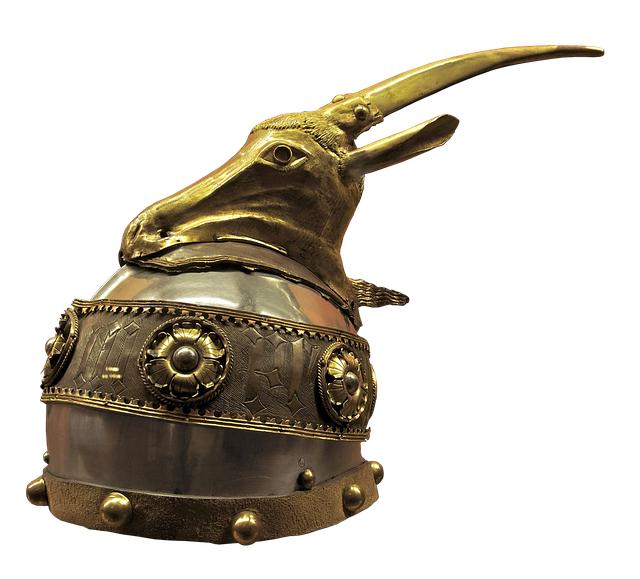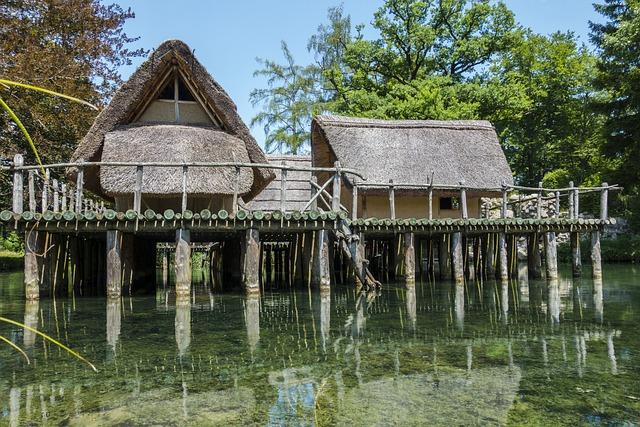In a groundbreaking finding that reshapes our understanding of prehistoric societies in North Africa, archaeologists have unearthed evidence of a previously unknown Neolithic community in Morocco. This revelation not only highlights the significance of North Africa in the broader context of Mediterranean prehistory but also challenges longstanding narratives that primarily centered on Europe and the Near East. The findings, detailed in a recent study published on Phys.org, reveal a complex society with complex agricultural practices and intricate social structures. As researchers delve deeper into this ancient civilization, they uncover insights that may illuminate the interconnectedness of human cultural development across the Mediterranean region during the Neolithic era. This article explores the implications of this discovery while examining how it contributes to our evolving understanding of ancient human life in north Africa and its interactions with neighboring regions.
Discovery of a New neolithic Society in Morocco and Its Significance

The recent discovery of a previously unknown Neolithic society in Morocco has opened a new chapter in our understanding of North Africa’s extensive role in Mediterranean prehistory. Archaeological findings indicate that this society, which thrived between 4000 and 2500 BCE, possessed advanced methods of farming, crafting, and social organization. the uncovering of important artifacts such as pottery, tools, and remnants of settlements suggests a complex community engaged in agriculture, animal husbandry, and trade networks that could have influenced neighboring regions. Key elements of this find include:
- innovative Farming Techniques: Evidence of crop cultivation highlights their agricultural sophistication.
- Artistic Expressions: Pottery and carvings indicate a rich cultural life.
- Trade Networks: Items from distant regions suggest extensive trade connections.
This discovery not only enhances our comprehension of Neolithic life in Morocco but also challenges preconceived notions about the development of early societies in the Mediterranean. By integrating archaeological evidence with past narratives, researchers are now able to better understand the dynamics between different cultures. The findings prompt a re-evaluation of the interactions among North African societies and their counterparts across the Mediterranean basin, potentially reshaping the map of prehistoric civilization. A comparative overview of artifacts discovered can further illustrate the significance of this society:
| Artifact type | Description | significance |
|---|---|---|
| Pottery | Decorative and functional wares | Indicates everyday life and artistic culture |
| Tools | flint and stone implements | Suggests advanced crafting and hunting skills |
| Settlement Remains | Foundations of dwellings | Reveals social organization and community structure |
Cultural Practices and Artifacts Uncovered from the Neolithic Site

the excavation at the newly identified Neolithic site in morocco has revealed a rich tapestry of cultural practices that illuminate the daily lives and beliefs of its inhabitants. among the artifacts recovered, tools and pottery fragments provide crucial insights into their craftsmanship and technological advancements. preliminary analyses suggest that these communities engaged in sophisticated agricultural practices, as evidenced by the presence of:
- Ground stone tools: Used for grinding grains.
- Decorative pottery: Featuring intricate designs,indicating artistic expression.
- Animal remains: Suggesting domestication and a reliance on livestock.
Additionally, evidence of communal structures points to a society organized around collective living. The layout of these structures, along with burial sites containing ornamental items, suggests a system of social stratification and ritualistic practices, likely linked to their spiritual beliefs. A summary of some significant findings is outlined below:
| Artifact Type | Significance |
|---|---|
| Pottery Shards | Indicate trade networks and cultural exchanges. |
| Bone tools | Highlight craftsmanship and resource utilization. |
| Fire Pits | Suggest communal cooking practices and social gatherings. |
Implications for Understanding North Africa’s Role in Mediterranean Prehistory

The recent discovery of a previously unknown neolithic society in Morocco sheds new light on the complexities of Mediterranean prehistory and North Africa’s pivotal role in it.This finding not only challenges existing narratives about the development of early agricultural communities but also underscores the regionŌĆÖs connectivity with broader Mediterranean cultures. Researchers suggest that the innovative agricultural practices observed in this society may have influenced neighboring regions, promoting a crucial exchange of ideas, technologies, and goods across the Mediterranean basin. As these connections become clearer, they reveal a tapestry of interactions that were previously underestimated in historical accounts.
The implications of this discovery for understanding North africaŌĆÖs contributions to mediterranean prehistory are profound, prompting a reassessment of the cultural and economic dynamics of the era. Key aspects include:
- Trade Networks: Enhanced visibility of trade routes that interconnected North Africa with Europe and the Near East.
- Cultural Exchange: Evidence of shared practices and innovations, such as pottery styles and agricultural techniques.
- Population Movements: Insights into migration patterns that may have shaped the demographic landscape of the Mediterranean.
| discovery | Implication |
|---|---|
| New agricultural methods | Influence on neighboring societiesŌĆÖ farming practices |
| Artifacts with Mediterranean motifs | Possible trade links with other coastal cultures |
| Settlement patterns | Understanding of urban development in prehistoric contexts |
Environmental Factors Influencing the Development of Neolithic Societies

the discovery of a previously unknown Neolithic society in Morocco underscores the significance of environmental factors in shaping human development during this pivotal period. The region’s diverse geography, ranging from the coastal plains to the mountainous areas, provided various resources that were crucial for settlement and agriculture. key environmental elements influencing the evolution of these societies included:
- Climate Variability: Fluctuations in climate impacted the availability of water and arable land, encouraging communities to adapt their agricultural practices.
- Flora and Fauna: The presence of wild grains and domesticated animals facilitated the transition from a nomadic lifestyle to settled farming.
- Natural Resources: Proximity to rivers and rich soil enabled the development of irrigation techniques, fostering agricultural productivity.
Moreover,the interaction of these environmental factors created a unique landscape that contributed to the social structures and daily life of Neolithic communities. The archaeological findings in Morocco reveal a nuanced understanding of how these societies thrived through resource management and innovation. An overview of discovered site features highlights their adaptability to the habitat:
| Feature | Description |
|---|---|
| Settlement Layout | Evidence of organized housing structures suggesting communal living. |
| Agricultural tools | Hoard of grinding stones indicating advanced crop processing methods. |
| Pots and Containers | Storage vessels found, reflecting food preservation techniques. |
Future Research Directions for Sustainable Archaeological Practices in North Africa

As new discoveries continue to shed light on the intricacies of North african prehistory,it becomes increasingly essential for research to focus on sustainable archaeological practices that honor both the region’s heritage and its environmental context. Future studies should explore integrative methodologies that combine traditional archaeological techniques with contemporary technologies. This could involve the application of remote sensing technologies and geoarchaeology, which can improve the efficiency of excavations and minimize the environmental footprint. Additionally, researchers should prioritize community engagement by collaborating with local populations to ensure that archaeological work serves both educational and cultural preservation purposes.
To guide these sustainable practices, it may be beneficial to establish a framework that addresses critical areas of research, including:
- Conservation of archaeological sites: Developing strategies to protect sites from modern threats, such as urbanization and climate change.
- Ecological impact assessments: Conducting thorough evaluations of how archaeological activities affect surrounding ecosystems.
- Education and outreach programs: Creating initiatives that inform local communities about the significance of their heritage and the importance of sustainable practices.
Moreover,building interdisciplinary collaborations between archaeologists,environmental scientists,and local stakeholders will create richer,more informed research environments. A proposed framework for collaboration can be summarized in the following table:
| Stakeholder | Focus Area | Collaborative Outcome |
|---|---|---|
| Archaeologists | site excavation and analysis | Data sharing and preservation |
| Environmental Scientists | Ecological assessments | Sustainable practices |
| Local communities | Cultural heritage | Community-driven initiatives |
The Need for Collaborative Efforts in Heritage Preservation and Education

The recent discovery of a previously unknown Neolithic society in Morocco highlights the importance of collaborative efforts in both heritage preservation and education. As archaeologists unearth ancient remnants and practices, they reveal the intricate connections between North African cultures and their Mediterranean counterparts. Interdisciplinary collaboration brings together researchers from various fields, including archaeology, anthropology, and history, enabling a holistic understanding of how such societies functioned and interacted. This cooperative approach not only enriches our knowledge but also fosters a deeper thankfulness for the diverse cultures that contributed to the region’s historical tapestry.
Moreover, engaging local communities in these preservation efforts is essential for ensuring that the knowledge gained is disseminated effectively. By involving residents in archaeological projects and educational initiatives, we can foster a sense of ownership over their heritage. Initiatives may include:
- Workshops on the significance of archaeological findings
- Cultural exchange programs with neighboring regions
- collaborative exhibitions in local museums
Such collaborative frameworks not only enhance the educational aspects of heritage preservation but also empower local populations to celebrate and maintain their cultural identity as they navigate the complexities of a rapidly changing world.
In Conclusion
the recent discovery of a previously unknown Neolithic society in Morocco marks a significant advancement in our understanding of North Africa’s pivotal role in the Mediterranean’s prehistoric landscape. This finding not only sheds light on the complexity of social structures and cultural practices in ancient communities but also challenges existing narratives that have often marginalized the contributions of North African societies to broader Mediterranean developments. As researchers continue to excavate and analyse these rich archaeological sites, we can anticipate a deeper appreciation of the interconnectedness that defined human experiences during the Neolithic era. This landmark discovery opens new avenues for scholarly inquiry and invites us to reconsider the significance of north Africa in shaping the prehistory of the mediterranean region.







